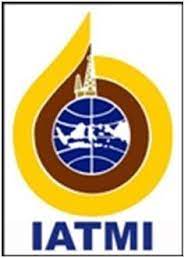Potensi Batuan Induk Hidrokarbon Serpih Gumai di Talang Padang, Kabupaten Tanggamus Propinsi Lampung
(1) Petroleum Engineering, Universitas Proklamasi 45 Yogyakarta
(2) Geological Engineering, Universitas Pembangunan Nasional "Veteran" Yogyakarta
(3) Geological Engineering, Universitas Pembangunan Nasional "Veteran" Yogyakarta
(4) Geological Engineering, Universitas Pembangunan Nasional "Veteran" Yogyakarta
(5) Geological Engineering, Universitas Pembangunan Nasional "Veteran" Yogyakarta
(*) Corresponding Author
Abstract
Identifikasi interval batuan yang mungkin berpotensi sebagai batuan induk merupakan langkah awal eksplorasi yang penting, oleh sebab itu perlu dilakukan penelitian tentang potensi batuan sedimen yang mengandung bahan organik dengan kadar tertentu, yang oleh panas dan waktu dapat menghasilkan hidrokarbon dalam bentuk minyak atau gas secara tepat. Penelitian ini bertujuan untuk mengidentifikasi fasies dan potensi batuan induk hidrokarbon Formasi Gumai di Talang Padang, Cekungan Sumatra Selatan. Analisis geokimia guna mengetahui potensi dan kualitas batuan induk dilakukan pada serpih penyusun Formasi Gumai. Hasil analisis potensi dan kualitas Batuan Induk menunjukkan kandungan TOC 3,55 termasuk “sangat baik”. Rock-Eval menunjukkan bahwa serpih berpotensi “sedang” sebagai batuan induk hidrokarbon (S2 = 4,32 kg/ton). Angka Ro (<0,6) menunjukkan tingkat pematangan hidrokarbon belum tercapai. Nilai HI yang relatif tinggi mencerminkan bahwa batuan ini jika mencapai kematangan akan cenderung menghasilkan minyak. Nilai HI antara 456 mgHC/g umumnya berasal dari kerogen tipe II yang secara dominan mengandung unsur organisme laut dan darat.
Rock Identification intervals that might be as potential source rocks is an important initial exploration step, therefore it is necessary to conduct research on the potential of sedimentary rocks containing certain levels of organic material, which by heat and time can produce hydrocarbons in the form of oil or gas appropriately. This study aims to identify the facies and potentials of the Gumai Formation hydrocarbon source rock in Talang Padang, South Sumatra Basin. Geochemical analysis to determine the potential and quality of the source rock is carried out on the Gumai Formation shale. The results of the analysis of the potential and quality of the Parent Rock showed that the TOC content of 3.55 was "very good". Rock-Eval shows that shale has the potential to be "medium" as a hydrocarbon source rock (S2 = 4.32 kg/ton). Ro (<0.6) indicates the level of hydrocarbon maturation has not been reached. The relatively high HI value reflects that if these rocks reach maturity they will tend to produce oil. HI values between 456 mgHC/g are generally derived from type II kerogen which predominantly contains marine and terrestrial organisms.
Keywords
Full Text:
PDFReferences
Bordenave, M. L. (ed.), 1993. Applied Petroleum Geochemistry. Editions Technip, France, 524pp.
Dalrymple, R. W., 1992, Tidal depositional System, in Walker, R.G., and NP James, Facies Model, Rrespons to Sea Level Change, Geol. Association, Canada.
Ginger, D., Fielding, K., 2005. The Petroleum Systems and Future Potential of The South Sumatra Basin, Proceedings, Indonesian Petroleum Association, Thirtieth Annual Convention & Exhibition.
Peters, K.E., 1986. Guidelines for evaluating petroleum source rock using programmed pyrolysis. American Association of Petroleum Geologists, Bulletin, 70, p.318-329.
Tissot, B.P. dan Welte, D.H., 1984. Petroleum Formation and Occurrence, Edisi Kedua, Springer-Verlag, Berlin, 699 h.
Gafoer, S., Amin, T.C., Pardede, R., 1992. Geological Map of The Bengkulu Quad-rangles, Sumatra, Scale 1:250.000, Geological Research and Development, Bandung.
Selley, R.C., 1985, Ancient Sedimentary Envi-ronments, Third Edition. Cornell University Press, New York
Waples, D.W., 1985. Organic Geochemistry for Exploration Geologist. International Human Resources Development Corp., Boston, 232 h.
DOI: https://doi.org/10.30588/jo.v1i1.237
Article Metrics
Abstract view : 602 timesPDF - 2 times
Refbacks
- There are currently no refbacks.
Copyright (c) 2017 Listriyanto Listriyanto, Sugeng Widada, Basuki Rahmad, Salatun Said, Hendaryono Hendaryono



.jpg)










.png)